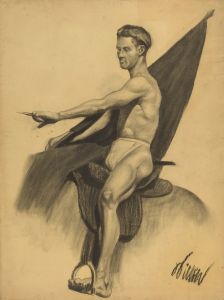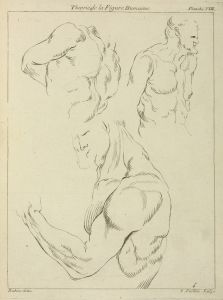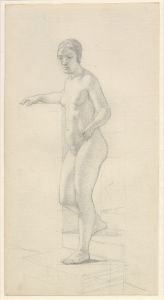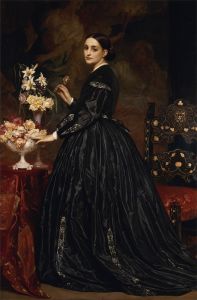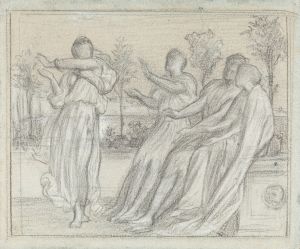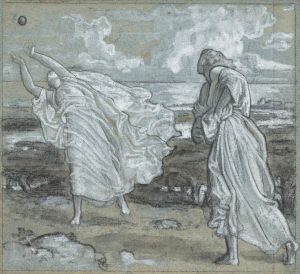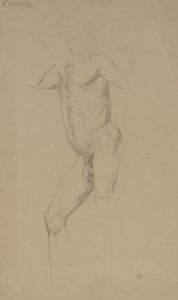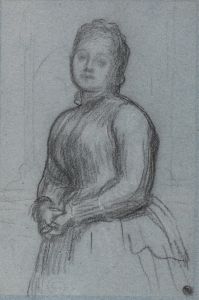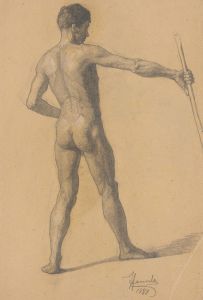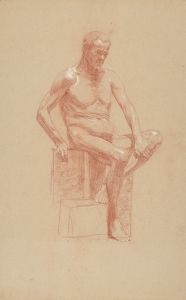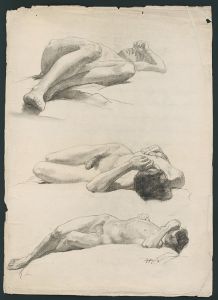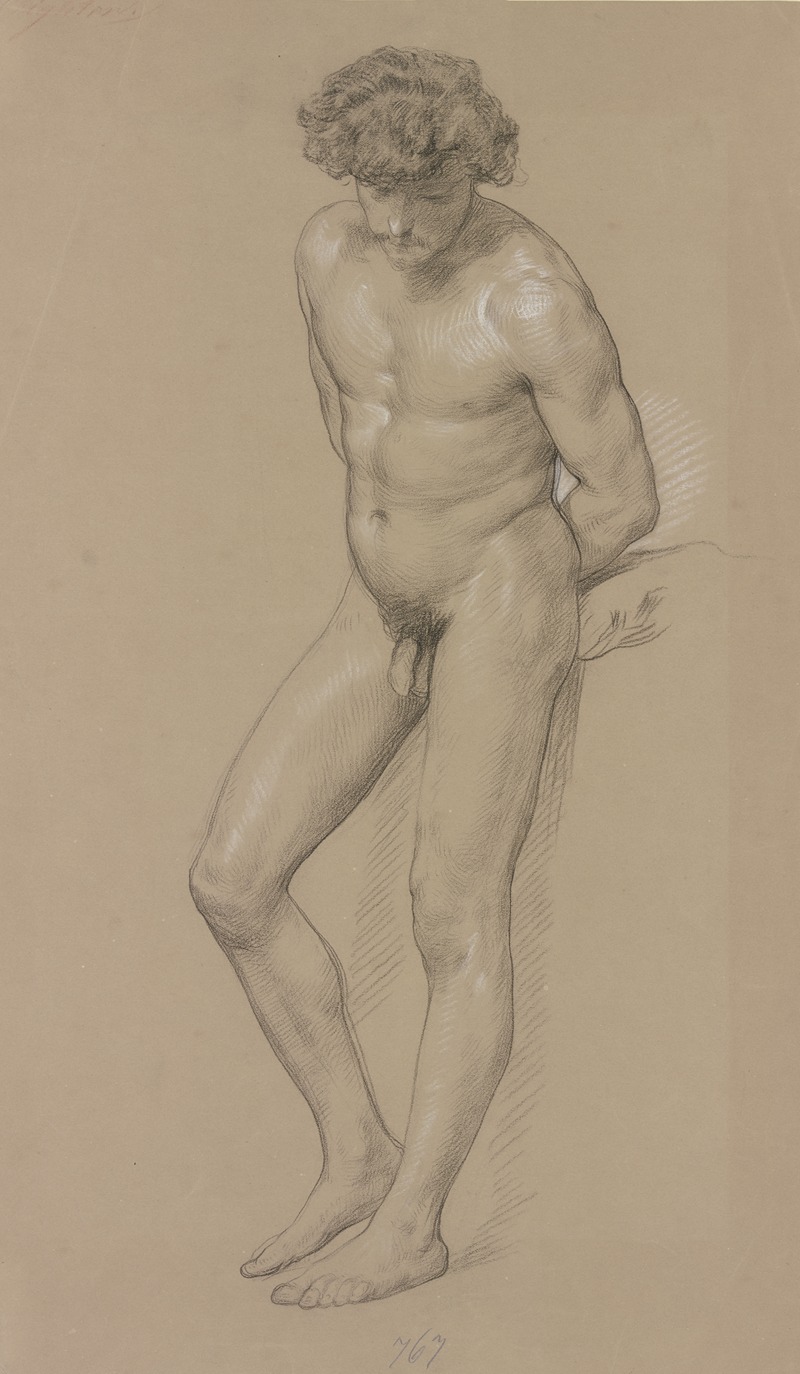
Standing male nude.
A hand-painted replica of Frederic Leighton’s masterpiece Standing male nude., meticulously crafted by professional artists to capture the true essence of the original. Each piece is created with museum-quality canvas and rare mineral pigments, carefully painted by experienced artists with delicate brushstrokes and rich, layered colors to perfectly recreate the texture of the original artwork. Unlike machine-printed reproductions, this hand-painted version brings the painting to life, infused with the artist’s emotions and skill in every stroke. Whether for personal collection or home decoration, it instantly elevates the artistic atmosphere of any space.
"Standing Male Nude" is a drawing by the British artist Frederic Leighton, who was a prominent figure in the Victorian art world. Leighton was born on December 3, 1830, in Scarborough, England, and he became one of the leading artists of his time, known for his classical style and his contributions to the Aesthetic Movement.
The drawing "Standing Male Nude" is an example of Leighton's skill in depicting the human form with precision and elegance. This work showcases his deep understanding of anatomy and his ability to render the male body with a sense of grace and strength. The drawing is executed with meticulous attention to detail, highlighting the musculature and posture of the figure.
Leighton was heavily influenced by the classical art of ancient Greece and Rome, and this influence is evident in "Standing Male Nude." The pose of the figure is reminiscent of classical sculptures, with a naturalistic yet idealized representation of the human body. Leighton's training in Italy, where he studied the works of Renaissance masters and classical antiquities, greatly informed his artistic approach.
Throughout his career, Leighton produced numerous studies of the human figure, both male and female. These studies were often preparatory works for his larger paintings and sculptures. "Standing Male Nude" is likely one of these preparatory studies, serving as a foundational piece for a more complex composition.
Leighton's dedication to the study of the human form was part of a broader Victorian interest in classical ideals and the revival of classical art forms. His works were celebrated for their beauty and technical proficiency, and he was a central figure in the Royal Academy of Arts, where he served as President from 1878 until his death in 1896.
"Standing Male Nude" reflects Leighton's commitment to the principles of academic art, with its emphasis on careful observation, anatomical accuracy, and the pursuit of ideal beauty. The drawing is a testament to his skill as a draftsman and his reverence for the classical tradition.
Leighton's legacy as an artist is significant, and his works continue to be studied and admired for their contribution to the art of the 19th century. "Standing Male Nude" remains an important example of his artistic vision and his mastery of the human form.





